50+ SAMPLE Management Action Plan
-
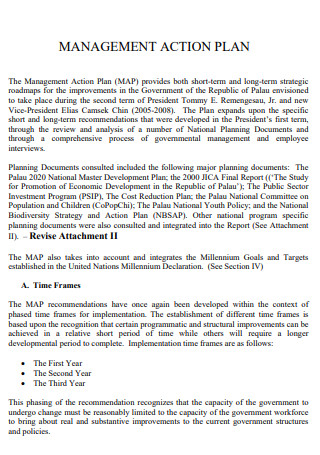
Management Action Plan
download now -
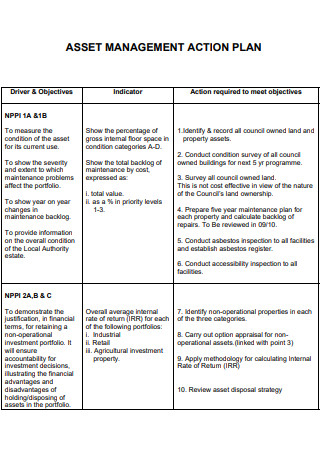
Assest Management Action Plan
download now -
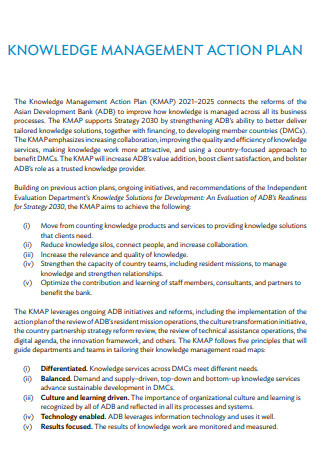
Knowledge Management Action Plan
download now -

Management Goals And Action Plan
download now -

Joint Inspection Management Action Plan
download now -

Results Based Management Action Plan
download now -

Speed Management Action Plan
download now -

Management Response and Action Plan
download now -
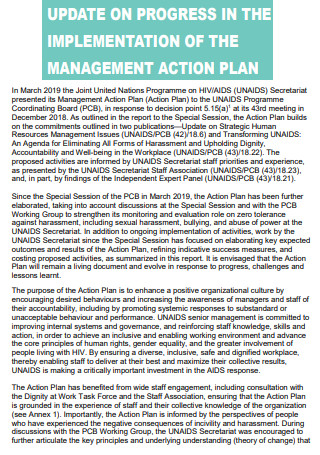
Implementation of Management Action Plan
download now -

Self Management Action Plan
download now -

Jurisdiction Speed Management Action Plan
download now -

Proposed Management Action Plan
download now -

Project Management and Project Action Plan
download now -

Watershed Management Action Plan
download now -

Pest Management Action Plan
download now -

Environmental Management Action Plan
download now -

Destination Management Action Plan
download now -

Chemicals Management Action Plan
download now -

Sustainable Management Action Plan Worksheet
download now -

Debt Management Action Plan
download now -

Records Management Action Plan
download now -

Health Leads Change Management Action Plan
download now -

Sediment Management Action Plan
download now -

Management Action Plan Annual Report
download now -

Integrated Management Practices Action Plan
download now -

Information Management Assessment Action Plan
download now -

Self Management Skills Action Plan
download now -

Talent Pipeline Management Action Plan
download now -

Risk Management Framework Action Plan
download now -

Workload Management Action planning
download now -

Management Zone Early Action Plan
download now -

Sample Management Action Plan
download now -

National Environment Management Action Plan
download now -

Self Management Action Plan Format
download now -

Deer Management Action Plan
download now -

Record Management Action Plan
download now -

Energy Management Action Plan
download now -

Time Management Action Plan
download now -

Sanctuary Management Action Plan
download now -

Classroom Management Recommendations Action Plan
download now -

Data Management Action Plan
download now -

Plastic Waste Management Action Plan
download now -

Materials Management Action Plan
download now -

Chronic Pain Management Action Plan
download now -
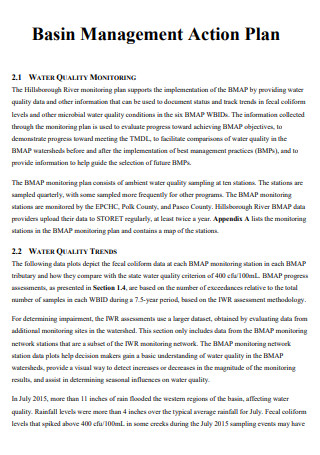
Basin Management Action Plan
download now -

Traffic Incident Management Action Plan
download now -

Pest And Waste Management Action Plan
download now -

Management Action Plan for Children
download now -

Management Corrective Action Plan
download now -

Management Comprehensive Action Plan
download now -

Bladder Management Action Plan
download now
FREE Management Action Plan s to Download
50+ SAMPLE Management Action Plan
What Is Management Action Plan?
Why Is Management Action Plan Important?
What Components Are In a Management Action Plan?
What Are the Factors That Affect Management Action Plan?
How to Write Management Action Plan:
FAQs
How will you know if an action plan is successful?
How do you strengthen your own planning skills?
What are some disadvantages of poor performance management?
How is planning useful to management?
Why is management an art?
What Is Management Action Plan?
A Management Action Plan is a kind of document that set down the execution of the project plan. It is a detailed list of the work that must be done to complete the project goals. It outlines what resources one will need to achieve the project objectives and what the timeline will be—including the action steps that are involved in getting from the start of the project to the finish. An action plan is just the same to a project implementation plan and it is very helpful during the project planning and project execution stages.
In addition, an action plan is a document that lists the action steps needed to achieve project goals and objectives. This clarifies what resources are needed to reach those goals, makes a timeline for the tasks or action items and determines what team members are needed to do it all.
Not only are you figuring out the action steps and timeline, but you will also determine who you will assemble for your project team to work on those tasks.
Why Is Management Action Plan Important?
It is important because it can help you know what comes first. Your action plan can enable you to map out strategies and small steps towards achieving long-term goals. Sometimes, it can be hard to work out what aspects of your business need prioritizing if you have different goals. It helps you work out the goals you want to achieve and when, and what you need to do to achieve them. This means you can focus your energy on what you exactly need to do.
To Increase the Chances of Investment. If you want finance for a business, having a well-researched plan with clear objectives and significant figures makes you much more likely to convince investors that your business is a reliable proposition to fund. Investors will only put their money and efforts into something that will be successful and profitable, whether it is a new business or one that has been operating for years. It shows investors that your business should be taken seriously.
To Help Manage the Finances. You can see if your business is succeeding and the steps you need to take to keep it running by making sales forecasts and seeing what target market your business is targeting. All businesses must be able to manage their finances carefully. It will manage cash flow by showing exactly what your expected incomings and outgoings are within given periods of time.
What Components Are In a Management Action Plan?
A management action plan is not something set in stone. As your company expands, and surrounding circumstances change, you will have to revisit and make adjustments to meet the latest needs. Not only in project management, but action plans can be used by individuals to prepare a strategy to achieve their own personal goals as well. It is an essential part of the strategic planning process and helps with improving teamwork planning. Components of an action plan include:
- A well-defined description of the goal to be achieved
- Tasks or steps that need to be carried out to reach the goal
- People who will be responsible of carrying out each task
- When will these tasks be completed (set deadlines and milestones)
- Resources needed to complete the tasks
- Measures to evaluate progress
What Are the Factors That Affect Management Action Plan?
Planning allows managers to adjust the environment in which their companies function instead of only reacting to changes. The following factors would affect the planning operation of management:
How to Write Management Action Plan:
Writing an action plan seems easy. However, there are few important steps you need to follow cautiously in order to get the best out of it. Here is how to properly write an action plan:
Step 1: Define the End Goal
You are setting yourself up for failure if you are not clear about what you want to do and what you want to achieve. Begin by defining where you are and where you want to be. Assess the situation and research possible solutions before prioritizing them. Then, write down your goal. And before moving on to the next step, run your goal through the SMART criteria. Or in other words, make sure that it is:
- Specific: well-defined and clear
- Measurable: include measurable indicators to track progress
- Attainable: realistic and achievable within the resources, time, money, experience, and more
- Relevant: align with your other goals
- Timely: has a finishing date
Step 2: Make a List of The Steps to Be Followed
The goal is already clear. So, what exactly should you do to make it a reality? Create a rough template to list down all the tasks to be performed, due dates, and people responsible. It is important that you make sure the entire team is involved in this process and has access to the document. This way, everyone will be aware of their roles and responsibilities in the project. Also, make sure that each task is clearly defined and is reachable. If you come across bigger and more complex tasks, break them down to smaller ones that are easier to execute and manage.
Step 3: Prioritize Tasks And Add Deadlines
It is time to reorganize the list by prioritizing the tasks. Some steps, you may need to prioritize as they can be blocking other sub-steps. Do not forget to add deadlines, and make sure that they are realistic. Consult with the person responsible for carrying it out to understand his or her ability before deciding on deadlines.
Step 4: Set Milestones
The advantage of adding milestones is that they give the team members to look forward to something and help them stay motivated even though the final due date is far away. Milestones can be considered mini-goals leading up to the main goal at the end. Remember not to keep too little or too much time in between the milestone you set. It is a best practice to space milestones two weeks apart. Start from the end goal and work your way back as you set milestones.
Step 5: Identify The Resources Needed
Before starting a project, it is important to make sure that you have all the essential resources at hand to complete the tasks. And if they are not currently available, you need to first make a plan to acquire them. Also, this should comprise your budget. You can assign a column of your action plan to mark the cost of each task if there are any.
Step 6: Visualize the Action Plan
Create something that everyone can understand at a glance and that can be shared with everyone. Whether your action plan comes in the shape of a flowchart, Gantt chart, or table, make sure that it clearly connects the elements we have identified so far—the tasks, task owners, deadlines, resources, etc. Lastly, this document should be easily accessible to everyone and should be editable.
Step 7: Monitor, Assess, And Update
Give some time to evaluate the progress you have made with your team. You can mark tasks that are completed as done on this final action plan, bringing attention to how you have progressed toward the goal. This will also bring out the tasks that are pending or delayed, in which case, you need to find out why and look for suitable solutions. And then, update the action plan properly.
FAQs
How will you know if an action plan is successful?
You have to examine how it connects your objectives to the way you plan to achieve them and the means you plan to use to measure the efficiency in a company strategy. A strategy is effective if it uses the resources allocated according to your plan and delivers the expected results.
How do you strengthen your own planning skills?
Learning how to plan, especially, if you are new to organizing your time can be a frustrating experience. And for some people, the reason could be their brains. Some key steps for using knowledge of your natural brain strength to build your planning skills are: recognizing your strengths and weaknesses, accepting the difficulty, letting go of all-or-nothing thinking, finding systems that work, borrowing other people’s brains, and just keep trying.
What are some disadvantages of poor performance management?
Employees could quit based on unfair results; fabricated or misleading information can affect the review; employee morale may drop if evaluated unfairly; resources—time and money—are wasted; job satisfaction drops and employees become burnt out; legal risks increase; managers are forced to give up resources; failure to set standards makes the process unfair and; biases become more prevalent.
How is planning useful to management?
In management, planning is necessary for so many reasons. One reason is, it allows the management to make effective decisions. In addition, it plays a vital role to the survival and growth of an organization as it ensures accuracy, economy, and operational effectivity. Also, planning has many different hats for it plays a positive role in the business environment, helps make uniform decisions, sets performance standards, and helps the organization solve problems and challenges that are present every day. Without planning, an organization can experience inefficiency, confusion, disorder, and wasting valuable resources in both human and material.
Why is management an art?
In order to be successful, a manager, in his profession, must acquire the knowledge of science and the art of applying it. Therefore, management is a judicious blend of science as well as an art because it proves the principles and the way these principles are applied is a matter of art. Science teaches to ’know’ and art teaches to ’do’. It is considered as a science because it has an organized body of knowledge that contains certain universal truth. Meanwhile, it is called an art because managing requires certain skills which are personal possessions of managers. Science provides the knowledge and art deals with the application of knowledge and skills.
Managers within companies and organizations of all sizes have a responsibility to apply efficient solutions in moving the business forward—in terms of its bottom line and in terms of its processes and procedures. The two common methods—flexibility and rigidity—describe how managers approach developing organizational strategies. Sometimes, barriers can get in the way no matter which method a manager employs. Approaching strategic management holistically can help navigate these barriers.
Generally, good management doesn’t just happen, it needs to be planned. Doable goals and major initiatives need to be established and followed, sound methods in accounting, budgeting and pricing must be adhered to, and maintaining current knowledge of client needs and aspirations must be a common priority.
By developing a management plan, you will become more efficient and relevant in your service provision—maximizing the use of resources while creating meaningful recreation opportunities for your community. Planning your management is smart and will surely bring you down the road to success.
